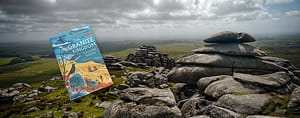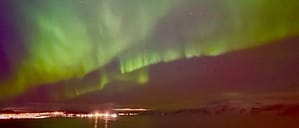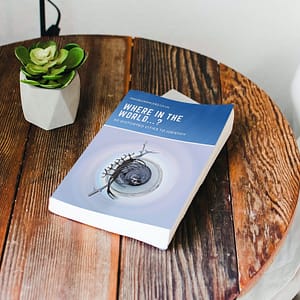Crocodile Dundee Country
“Keep your elbow in,” the guide warned, and not a moment to soon. Several hundred kilogrammes of armour-plated killing machine erupted out of the murky water mouth gaping. It’s mouth snapped shut with a sound like a heavy calibre gunshot before crashing back into a maelstrom of white and coffee-coloured water. Welcome to crocodile territory.
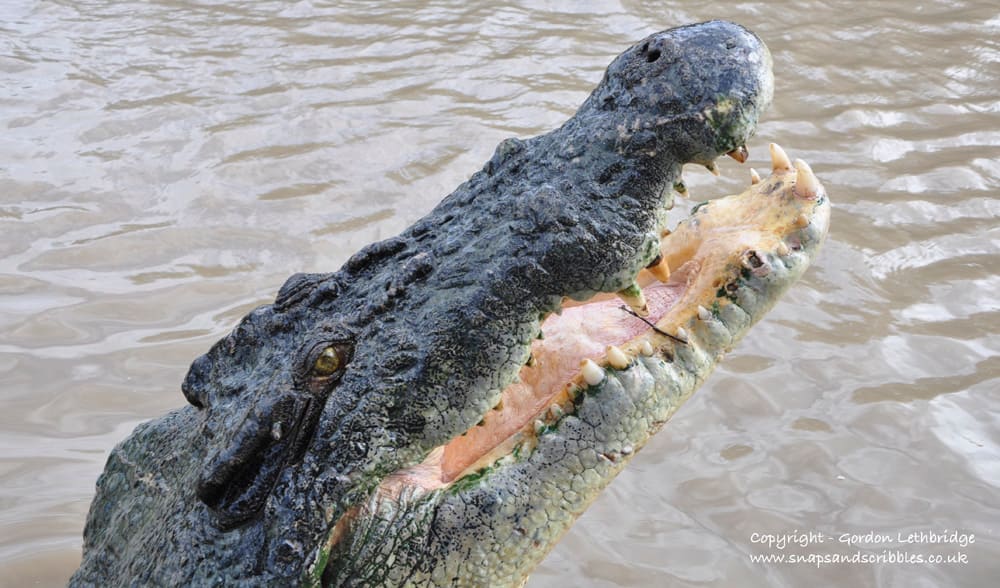
Visiting the Northern Territory I noticed some beautiful stretches of sandy beach, particularly around Darwin but not one single person enjoying the calm, stunningly azure sea. Nor did I see, as we do here in the UK, fishermen along the banks of rivers obviously replete with fish. The reason is the saltwater crocodile or “saltie”.
The “saltie” is the largest of all living reptiles, as well as the largest terrestrial and riparian predator in the world. As its name implies, this crocodile can live in salt water, but usually resides in mangrove swamps, estuaries, deltas, lagoons and the lower stretches of rivers. The saltwater crocodile is a formidable, opportunistic, and adaptable predator capable of taking almost any animal that enters its territory. [Facts taken from Wikipedia]
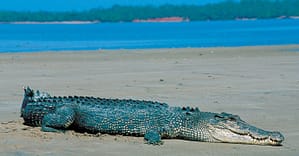
Reason enough to steer well clear of all water sources in the Northern Territory? Well not exactly. The perceived wisdom is that when there are crocodile warning signs you don’t swim, picnic near the bank or fish from the water’s edge. When there are no warning signs you do not swim… etc. When there are “safe swimming” signs then you can swim, picnic and fish. Croc tourism is big in crocodile territory. So the Northern Territory government employs rangers to patrol and relocate crocodiles that stray into swimming holes and marinas. During the wet season the rivers are much higher enabling the crocs to swim upstream. Once the dry season arrives and water levels fall they are unable to get out. They are trapped and relocated making places like Katherine Gorge in the Nitmiluk National Park safe for swimming and kayaking. The freshwater crocodiles, shy and smaller, are left in peace.
I wanted to encounter these awesome creatures but wasn’t about to go kayaking in, or walking along the banks, of a croc infested river
You can start by visiting Crocosaurus Cove in the middle of Darwin itself. George the croc gifted to the royal couple is on display here and has his own Facebook page. Two large renamed crocs Kate and William reside here too. However there is a serious side to Crocosaurus Cove: educating people as well as giving them “crocodile experiences”. It is not however crocodile territory. For that you need to head out into the wild.

Adelaide River Cruises are based on the river bank at the end of a dirt track. The original jumping croc tour they take you out into real crocodile territory, the river. Accompanied by a guide we motored upstream until we sighted our first croc. The guide suspended a hunk of buffalo meat on a rod over the edge of the boat. After eyeing it up the croc, launched itself out of the water like an exocet missile with teeth. Most of the power for launching themselves out of the water comes from the tail.
We met other crocodiles on the river, large and small, male and female each in their own territory and each eager to meet the boat. I’m not sure of the ethics of it but apparently leaping out the water is natural behaviour to take snakes and birds from low hanging branches. I do, however, think that the crocs are demonstrating habituated behaviour however natural. It’s a great experience to see crocodiles in action.
The largest of the crocs was Brutus, touching 5 metres he erupts from the water in a terrifying spectacle of awesome, menacing power. His patch of river was not crocodile territory it was Brutus’ own territory.
Corroboree Billabong is part of the wetlands system around the St Mary River and judging by the plethora of crocodile warning signs advising us not to picnic, fish from the banks, camp or swim was real crocodile territory. Our visit to Corroboree was threefold, to fish, to birdwatch (see Northern Territory’s birdlife) and to croc watch. All three can safely be done from a boat. We had our own but they can be hired.

At Corroboree Billabong the crocs are not habituated to humans feeding them so are more difficult to spot. We saw several in the water but they swiftly disappeared. Spotting them on the bank was just as hard; several large crocs turned out to be logs. On the bank they were much more approachable; at least by boat.


Seeing them sunning themselves on lush grassy banks or among the pandanus palms you realise why picnicking and fishing from the bank are advised against.

As you will see in future posts I was able to enjoy crocodile territory in the Northern Territory Outback without any close encounters such as that of Linda Kozlowski’s character Sue Charlton in the film Crocodile Dundee. The Northern Territory’s iconic crocodile is a great tourist draw on a par with Africa’s Big Five. That fact alone has helped in its survival and shows that economically, conservation is viable.
For more on what to do in Northern Territory visit www.australiasoutback.co.uk
I will be writing more about the Northern Territory and Darwin in future posts. If you would like to know when these appear then sign up to be notified in the sidebar or like the Travel Unpacked Facebook page




